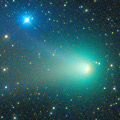
|
Now it is 6.9 mag (Nov. 26, Juan Jose Gonzalez). It keeps so bright as 6-8 mag for a long time from 2011 to 2012. In the Northern Hemisphere, it will be extremely low from late November to late December. But after that, it will be observable in excellent condition again. In the Southern Hemisphere, it is not observable now. But it will be observable again in 2012 spring, although it locates low.
Date(TT) R.A. (2000) Decl. Delta r Elong. m1 Best Time(A, h)
Nov. 26 17 30.79 20 6.6 2.116 1.597 46 6.4 18:18 (100, 22)
Dec. 3 17 30.41 20 53.8 2.111 1.577 44 6.3 18:18 (104, 17)
|

|
Now it is 9.6 mag (Nov. 26, Juan Jose Gonzalez). It will start fading after December. But it keeps observable in excellent condition for a while in the Northern Hemisphere. In the Southern Hemisphere, it keeps observable until 2012 spring when it fades down to 15-16 mag.
Date(TT) R.A. (2000) Decl. Delta r Elong. m1 Best Time(A, h)
Nov. 26 4 34.46 28 14.1 1.248 2.226 169 10.9 0:19 ( 0, 84)
Dec. 3 4 8.70 22 28.2 1.282 2.265 173 11.2 23:19 ( 0, 77)
|

|
It is not observable at all due to the bad condition in this apparition.
Date(TT) R.A. (2000) Decl. Delta r Elong. m1 Best Time(A, h)
Nov. 26 15 18.83 -13 20.1 2.003 1.066 13 11.3 5:15 (283, -5)
Dec. 3 15 48.61 -14 58.0 2.025 1.087 12 11.6 5:21 (285, -5)
|

|
Now it is very bright as 10.6 mag (Nov. 28, Marco Goiato). It will be observable in good condition at 11-12 mag in autumn and winter.
Date(TT) R.A. (2000) Decl. Delta r Elong. m1 Best Time(A, h)
Nov. 26 23 49.13 0 0.7 1.432 2.047 114 11.9 19:30 ( 0, 55)
Dec. 3 23 55.84 0 13.7 1.492 2.037 108 11.9 19:09 ( 0, 55)
|

|
It was observed as bright as 13.9 mag in 2011 autumn (Oct. 19, Hidetaka Sato). It is not observable now. In the Northern Hemisphere, it will be observable again in 2012 summer, when it will be fainter than 15 mag. In the Southern Hemisphere, it will never be observable again.
Date(TT) R.A. (2000) Decl. Delta r Elong. m1 Best Time(A, h)
Nov. 26 17 41.32 -26 57.6 2.431 1.569 22 12.6 18:18 ( 59, -3)
Dec. 3 18 2.94 -25 9.7 2.405 1.521 20 12.4 18:18 ( 61, -3)
|
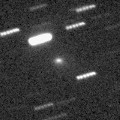
|
Now it is 12.2 mag and visible visually (Nov. 25, Seiichi Yoshida). It will reach up to 10 mag from January to March, but it will be too low to observe. It is already unobservable in the Southern Hemisphere. It is getting lower in the evening sky also in the Northern Hemisphere. It will be lower than 10 degree in early January.
Date(TT) R.A. (2000) Decl. Delta r Elong. m1 Best Time(A, h)
Nov. 26 18 10.25 -2 31.7 2.157 1.471 35 13.5 18:18 ( 74, 17)
Dec. 3 18 30.96 -3 9.2 2.117 1.410 33 13.1 18:18 ( 74, 16)
|
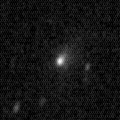
|
It brightened up to 12.3 mag around the perihelion passage, although it located very low (Oct. 19, Hidetaka Sato). Now it is 13.6 mag (Nov. 21, Katsumi Yoshimoto). The condition of this apparition is bad. In the Northern Hemisphere, it is only observable from December to February in the evening very low sky. In the Southern Hemisphere, it keeps observable for a long time, although it keeps locating extremely low. The component B was not detected, fainter than 20 mag, on May 14 (Hidetaka Sato).
Date(TT) R.A. (2000) Decl. Delta r Elong. m1 Best Time(A, h)
Nov. 26 18 59.85 -29 50.5 1.655 1.106 40 13.2 18:18 ( 45, 8)
Dec. 3 19 36.37 -29 11.7 1.699 1.159 41 13.5 18:18 ( 44, 10)
|

|
First return of a new comet which brightened up to 9.5 mag in a major outburst in 2006. It will approach to the earth down to 0.2 A.U. in January, and will be observable in excellent condition. However, the brightness will be quite uncertain. The comet has not been recovered yet. It was fainter than 20 mag on Oct. 2 (Jean-Francois Soulier).
Date(TT) R.A. (2000) Decl. Delta r Elong. m1 Best Time(A, h)
Nov. 26 22 29.11 36 26.3 0.451 1.199 106 14.2 18:18 (130, 88)
Dec. 3 22 37.35 34 19.9 0.416 1.151 102 13.2 18:18 ( 84, 84)
|
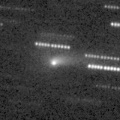
|
Now it is bright as 13.0 mag and visible visually (Nov. 25, Seiichi Yoshida). t keeps the current brightness until December. Then it starts fading, but it keeps observable in good condition until May when it becomes fainter than 18 mag. It locates somewhat low in the Southern Hemisphere. Juan Jose Gonzalez reported it so bright as 10.2 mag visually on Nov. 24.
Date(TT) R.A. (2000) Decl. Delta r Elong. m1 Best Time(A, h)
Nov. 26 10 46.16 7 45.0 1.233 1.485 83 13.4 5:15 (324, 58)
Dec. 3 11 3.38 8 2.6 1.204 1.508 86 13.5 5:21 (331, 60)
|

|
It brightened up to 17.1 mag in late June (June 24, J. F. Hernandez). The condition of this apparition is bad, and it is not observable around the perihelion passage. It will appear in the morning sky at 14 mag in 2012 April in the Southern Hemisphere. It will not be observable until 2012 June in the Northern Hemisphere, when the comet will be 15.5 mag.
Date(TT) R.A. (2000) Decl. Delta r Elong. m1 Best Time(A, h)
Nov. 26 16 37.13 -23 45.8 2.551 1.579 8 13.5 18:18 ( 70,-13)
Dec. 3 17 0.02 -24 48.7 2.548 1.572 6 13.4 18:18 ( 70,-15)
|

|
Now it is bright as 13.9 mag (Nov. 11, K. Hills). It keeps bright as 13-14 mag for a long time after this until 2013. It is not observable in the Northern Hemisphere, but it is observable in good condition in the Southern Hemisphere.
Date(TT) R.A. (2000) Decl. Delta r Elong. m1 Best Time(A, h)
Nov. 26 13 48.26 -85 23.7 5.798 5.461 65 13.5 5:15 (355,-33)
Dec. 3 14 30.30 -86 47.4 5.797 5.459 65 13.5 5:21 (356,-34)
|

|
It brightened up to 14.1 mag in August and September (Aug. 11, Artyom Novichonok and Vladimir Gerke). Now it is not observable. It will appear in the morning sky at 14 mag at the end of February. Then it will be observable in good condition in the Southern Hemisphere while fading gradually. It will locate somewhat low in the Northern Hemisphere. In 2011, some visual observers reported it was very bright as 10-12 mag.
Date(TT) R.A. (2000) Decl. Delta r Elong. m1 Best Time(A, h)
Nov. 26 17 4.02 -9 27.6 3.273 2.356 18 13.7 18:18 ( 78, 0)
Dec. 3 17 19.69 -10 28.9 3.283 2.349 15 13.6 18:18 ( 79, -3)
|
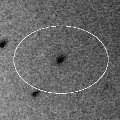
|
Appearing in the morning sky. Now it is bright as 14.2 mag (Oct. 24, Jean-Francois Soulier). Juan Jose Gonzalez reported a very faint large coma, remnant of an old outburst, is visible with a total brightness of 10.0 mag on Nov. 24.
Date(TT) R.A. (2000) Decl. Delta r Elong. m1 Best Time(A, h)
Nov. 26 12 24.57 -9 51.3 6.792 6.262 53 14.1 5:15 (310, 29)
Dec. 3 12 27.90 -10 21.7 6.696 6.262 60 14.1 5:21 (317, 34)
|

|
Big asteroid discovered in 1906. It suddenly showed the cometary activity on Dec. 11, 2010, probably due to an impact of a small object. It was very bright as 11.5 mag visually (Dec. 17, 2010, Juan Jose Gonzalez). It had a dust coma still on Jan. 9, 2011 (Joseph Brimacombe). Then it turned to be stellar at 13.8 mag (Apr. 5, Juan Jose Gonzalez). Appearing in the morning sky in the Northern Hemisphere.
Date(TT) R.A. (2000) Decl. Delta r Elong. m1 Best Time(A, h)
Nov. 26 14 11.36 -3 58.4 3.340 2.561 32 14.3 5:15 (285, 14)
Dec. 3 14 22.97 -5 6.0 3.282 2.552 36 14.3 5:21 (290, 18)
|
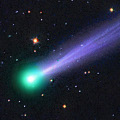
|
It passed very near by the earth, within 0.1 A.U., and brightened up to 8.0 mag in the southern sky (Aug. 14, Willian Souza). After appearing in the morning sky in late September, it brightened up to 6.6 mag (Sept. 25, Juan Jose Gonzalez). Now it is fading, but still visible visually at 13.5 mag (Nov. 25, Seiichi Yoshida).
Date(TT) R.A. (2000) Decl. Delta r Elong. m1 Best Time(A, h)
Nov. 26 13 3.96 -3 36.9 1.641 1.210 47 14.3 5:15 (297, 27)
Dec. 3 13 16.84 -4 40.9 1.682 1.307 50 14.9 5:21 (302, 30)
|

|
Now it is 14.3 mag and visible visually (Oct. 1, Jakub Cerny). It will be observable at 13-14 mag for a long time from 2011 to 2012. However, it will be unobservable temporarily from November to January.
Date(TT) R.A. (2000) Decl. Delta r Elong. m1 Best Time(A, h)
Nov. 26 17 57.64 -13 26.5 6.095 5.244 27 14.3 18:18 ( 67, 8)
Dec. 3 17 59.16 -13 37.4 6.136 5.233 21 14.3 18:18 ( 71, 3)
|

|
New comet discovered in the spacecraft images. It was observed so bright as 9.4 mag (Sept. 22, Chris Wyatt). Appearing in the morning sky in the Northern Hemisphere. It is still bright as 13.2 mag and visible visually (Nov. 24, Seiichi Yoshida). It will be observable while fading gradually after this. In the Southern Hemisphere, further observations are very hard.
Date(TT) R.A. (2000) Decl. Delta r Elong. m1 Best Time(A, h)
Nov. 26 14 30.23 5 26.7 2.213 1.515 35 14.3 5:15 (275, 16)
Dec. 3 14 30.95 7 35.4 2.169 1.586 42 14.7 5:21 (278, 24)
|

|
It was expected to keep 14-15 mag for a long time from 2011 summer to 2012 summer. However, it is lost. It was observed only during two days in 2010 June. So the orbital elements are extremely uncertain. The condition is good in the Southern Hemisphere. But in the Northern Hemisphere, it is not observable until 2012 August.
Date(TT) R.A. (2000) Decl. Delta r Elong. m1 Best Time(A, h)
Nov. 26 17 21.18 -64 46.9 3.029 2.445 45 14.8 18:18 ( 28,-27)
Dec. 3 17 44.09 -66 13.1 3.004 2.420 45 14.7 18:18 ( 27,-28)
|

|
Now it is visible visually at 13.6 mag (Nov. 27, Jakub Cerny). It is expected to be 13 mag and will be observable in good condition in 2013. In the Northern Hemisphere, it keeps observable for a long time after this. It is not observable in the Southern Hemisphere.
Date(TT) R.A. (2000) Decl. Delta r Elong. m1 Best Time(A, h)
Nov. 26 23 7.87 59 2.7 6.518 7.004 115 14.8 18:48 (180, 66)
Dec. 3 23 3.13 57 49.5 6.546 6.979 112 14.7 18:18 (179, 67)
|
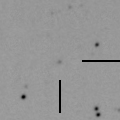
|
It brightened up to 16.6 mag on Oct. 12 (Hidetaka Sato). But it is not observable now. It will keep unobservable until it becomes fainter than 18 mag.
Date(TT) R.A. (2000) Decl. Delta r Elong. m1 Best Time(A, h)
Nov. 26 17 29.29 -26 55.3 2.471 1.583 20 15.0 18:18 ( 61, -5)
Dec. 3 17 53.22 -26 43.9 2.481 1.577 18 14.9 18:18 ( 61, -6)
|

|
It has brightened faster than expected, and reached up to 8.1 mag in mid August (Aug. 19, Michael Mattiazzo). However, the nucleus has been disintegrated, and it faded out and got diffuse very rapidly. The necleus has been already fainter than 22.5 mag and unable to be detected (Oct. 23, Jakub Cerny). But the remnant of the comet, extremely large, diffuse and elongated, was detected by CCD images in late October. Juan Jose Gonzalez reported the remnant is still visible visually on Nov. 24, and the total magnitude is 9.5 mag.
Date(TT) R.A. (2000) Decl. Delta r Elong. m1 Best Time(A, h)
Nov. 26 3 38.51 24 11.7 0.647 1.632 173 15.3 23:17 ( 0, 79)
Dec. 3 3 25.83 22 56.8 0.773 1.742 164 16.0 22:37 ( 0, 78)
|

|
It is expected to be bright as 9 mag from 2012 to 2013. Now it is 15.8 mag (Oct. 22, Erik Bryssinck). It is already visible visually at 14.6 mag (Oct. 1, Jakub Cerny). In the Northern Hemisphere, it keeps observable in good condition for a long time until 2012 autumn when the comet brightens up to 10 mag. In the Southern Hemisphere, it is hardly observble before the perihelion passage. But it becomes observable in good condition since 2013 after the perihelion passage.
Date(TT) R.A. (2000) Decl. Delta r Elong. m1 Best Time(A, h)
Nov. 26 14 13.50 43 42.9 5.146 4.886 69 15.4 5:15 (238, 37)
Dec. 3 14 22.11 43 36.9 5.032 4.825 72 15.3 5:21 (240, 41)
|

|
Now it is 15.7 mag (Oct. 20, Catalina Sky Survey). It is expected to be observable at 13 mag for a long time from 2012 summer to 2013 summer. It will be observable in excellent condition in the Southern Hemisphere. But it is not observable at brightest time in the Northern Hemisphere. It keeps observable for a while at 16 mag while brightening gradually.
Date(TT) R.A. (2000) Decl. Delta r Elong. m1 Best Time(A, h)
Nov. 26 1 41.02 -33 15.5 3.631 4.159 116 15.5 21:20 ( 0, 22)
Dec. 3 1 32.98 -33 48.9 3.666 4.100 109 15.4 20:45 ( 0, 21)
|

|
First return of a new periodic comet which brightened up to 13 mag in a major outburst in 2005. In this apparition, it brightened up to 12 mag in 2011 summer and autumn. Now it is fading. It has already faded down to 15.0 mag (Nov. 27, Jakub Cerny). It keeps observable in good condition until February when it fades out down to 17-18 mag. The fragment B is also observed at 20 mag. Another fragments C and D are also observed at 21-22 mag.
Date(TT) R.A. (2000) Decl. Delta r Elong. m1 Best Time(A, h)
Nov. 26 22 58.01 5 2.7 1.972 2.413 104 15.4 18:39 ( 0, 60)
Dec. 3 23 4.88 5 30.6 2.077 2.435 99 15.7 18:18 ( 0, 61)
|
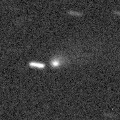
|
It was revealed to be a comet when appearing in the morning sky in early August. It has already passed the perihelion in April, and it will be fading after this. But it is still bright as 15.4 mag (Oct. 29, Artyom Novichonok). In the Northern Hemisphere, it keeps observable in excellent condition for a long time until 2012 summer. It is not observable at all in the Southern Hemisphere.
Date(TT) R.A. (2000) Decl. Delta r Elong. m1 Best Time(A, h)
Nov. 26 11 40.51 48 44.9 2.697 2.888 90 16.0 5:15 (230, 63)
Dec. 3 11 48.48 49 18.2 2.679 2.939 95 16.0 5:21 (225, 66)
|
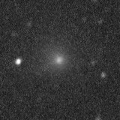
|
It has returned after 27-year blank since 1984. It brightened very rapidly, and became very bright as 9.1 mag (July 10, Tsutomu Seki). It may keep bright after the perihelion passage. It was visible in SWAN images still on Sept. 17 (Hirohisa Sato). Tsutomu Seki reported the comet is about 15 mag in early November, although he commented that confirmation is required.
Date(TT) R.A. (2000) Decl. Delta r Elong. m1 Best Time(A, h)
Nov. 26 13 39.76 -29 14.4 2.751 2.006 33 16.2 5:15 (310, 3)
Dec. 3 13 52.36 -30 24.4 2.793 2.094 37 16.6 5:21 (314, 6)
|
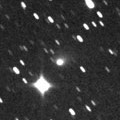
|
It brightened rapidly, reached up to 14.2 mag in summer and became visible visually (Aug. 1, Juan Jose Gonzalez). Now it is fading slowly. But it is still bright as 15.8 mag (Oct. 31, Mitsunori Tsumura). It keeps observable until winter when it fades out down to 17-18 mag.
Date(TT) R.A. (2000) Decl. Delta r Elong. m1 Best Time(A, h)
Nov. 26 21 37.81 -24 27.8 2.373 2.335 75 16.3 18:18 ( 15, 29)
Dec. 3 21 49.66 -23 32.2 2.460 2.343 71 16.4 18:18 ( 20, 29)
|

|
Now it is 15.7 mag (Oct. 29, Artyom Novichonok). It kept 16 mag from October to November, but it will be fainter than 18 mag in winter. In the Northern Hemisphere, it keeps locating the same altitude in the morning sky. In the Southern Hemisphere, it locates extremely low now, but it will be getting higher gradually. Juan Jose Gonzalez reported that it was visible as a 11.3-mag diffuse comet visually on Oct. 9.
Date(TT) R.A. (2000) Decl. Delta r Elong. m1 Best Time(A, h)
Nov. 26 12 30.91 -13 55.8 1.556 1.213 51 16.3 5:15 (311, 25)
Dec. 3 12 50.99 -17 22.5 1.585 1.259 52 16.5 5:21 (316, 25)
|

|
It became bright as 12 mag in 2010. Now it is fading. It has already faded down to 16.2 mag (Nov. 14, V. Gerke, A. Novichonok, S. Plaksa).
Date(TT) R.A. (2000) Decl. Delta r Elong. m1 Best Time(A, h)
Nov. 26 1 32.84 1 16.0 3.176 3.966 138 16.5 21:12 ( 0, 56)
Dec. 3 1 30.42 1 23.0 3.270 3.984 130 16.6 20:43 ( 0, 56)
|
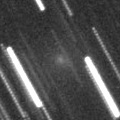
|
Extremely diffuse and hardly detected by CCD images. The nucleus is already fainter than 18 mag (Oct. 15, Jean-Francois Soulier). The comet can be already disintegrated. However, Juan Jose Gonzalez reported it so bright as 9.5 mag visually on Sept. 25. In the Northern Hemisphere, it keeps locating higher than 20 degree from November to December. In the Southern Hemisphere, it will be observable in early November, then it will be getting higher rapidly.
Date(TT) R.A. (2000) Decl. Delta r Elong. m1 Best Time(A, h)
Nov. 26 11 52.95 -19 37.0 1.896 1.619 58 16.5 5:15 (323, 26)
Dec. 3 11 53.62 -23 56.7 1.893 1.709 64 16.7 5:21 (333, 26)
|

|
Now it is 16.9 mag (Nov. 14, A. Tudorica, T. Badescu). It will be fading very slowly after this. In the Northern Hemisphere, it keeps observable for a long time until 2012 spring when it fades down to 17-18 mag. It will not be observable in the Southern Hemisphere.
Date(TT) R.A. (2000) Decl. Delta r Elong. m1 Best Time(A, h)
Nov. 26 22 35.28 38 46.9 5.229 5.622 108 16.6 18:18 (173, 86)
Dec. 3 22 38.95 37 40.1 5.334 5.655 104 16.7 18:18 (119, 84)
|

|
It keeps 17 mag for a long time from 2011 summer to 2012 spring. It keeps observable all thgough the period in good condition in the Southern Hemisphere. In the Northern Hemisphere, it is not observable until 2012 spring when it becomes fainter than 18 mag. No observations have been reported since August.
Date(TT) R.A. (2000) Decl. Delta r Elong. m1 Best Time(A, h)
Nov. 26 13 34.93 -68 35.4 2.396 1.967 53 16.8 5:15 (340,-23)
Dec. 3 13 27.52 -69 32.9 2.375 1.982 55 16.8 5:21 (343,-21)
|
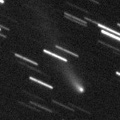
|
It reached up to 14 mag in 2010 autumn and winter. Now it is fading. It has already faded down to 16.6 mag (Sept. 14, Hidetaka Sato). In the Southern Hemisphere, it keeps observable in good condition while fading gradually. In the Northern Hemisphere, it will never be observable again.
Date(TT) R.A. (2000) Decl. Delta r Elong. m1 Best Time(A, h)
Nov. 26 3 19.55 -80 33.8 4.164 4.083 78 16.9 22:53 ( 0,-26)
Dec. 3 2 27.12 -80 21.9 4.249 4.127 76 17.0 21:35 ( 0,-25)
|
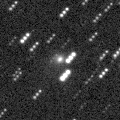
|
Although it has passed the perihelion in last November, it is uxexpectedly bright as 16.5 mag still now (Oct. 25, C. Bell). It keeps observable in excellent condition until winter. It will keep 16-17 mag for a while after this.
Date(TT) R.A. (2000) Decl. Delta r Elong. m1 Best Time(A, h)
Nov. 26 6 51.16 2 46.6 3.898 4.656 135 16.9 2:34 ( 0, 58)
Dec. 3 6 43.88 3 28.1 3.875 4.705 143 17.0 2:00 ( 0, 58)
|
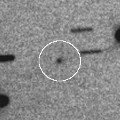
|
Now it is 17.3 mag (Nov. 15, Catalina Sky Survey). It tends to be brightest after the perihelion passage. In the Northern Hemisphere, it keeps observable at 17 mag in good condition from autumn to winter. In the Southern Hemisphere, it locates low and will be hard to observe.
Date(TT) R.A. (2000) Decl. Delta r Elong. m1 Best Time(A, h)
Nov. 26 10 53.74 20 8.3 2.174 2.329 86 17.0 5:15 (305, 67)
Dec. 3 11 1.45 20 23.9 2.125 2.369 91 17.0 5:21 (317, 71)
|
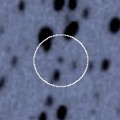
|
Now it is 17.5 mag (Nov. 5, LINEAR). It keeps observable in good condition at 17-18 mag until March. It locates low in the Southern Hemisphere.
Date(TT) R.A. (2000) Decl. Delta r Elong. m1 Best Time(A, h)
Nov. 26 3 9.64 37 8.1 1.197 2.150 159 17.0 22:48 (180, 88)
Dec. 3 2 48.97 35 10.3 1.185 2.114 153 17.0 22:00 (180, 90)
|
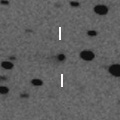
|
Now it is 17.0 mag (Oct. 16, Catalina Sky Survey). It keeps observable at 17 mag for a long time from 2011 to 2012.
Date(TT) R.A. (2000) Decl. Delta r Elong. m1 Best Time(A, h)
Nov. 26 23 34.81 12 38.6 7.614 8.085 115 17.0 19:15 ( 0, 68)
Dec. 3 23 32.16 12 12.7 7.736 8.091 107 17.0 18:45 ( 0, 67)
|

|
It brightened up to 13-14 mag and became visible visually from 2007 to 2009. Now it is fading. But it is still bright as 16.4 mag (Oct. 9, Artyom Novichonok and Vladimir Gerke). In the Northern Hemisphere, it keeps observable in excellent condition until early summer in 2012. In the Southern Hemisphere, it locates extremely low only.
Date(TT) R.A. (2000) Decl. Delta r Elong. m1 Best Time(A, h)
Nov. 26 10 57.11 36 9.6 10.899 10.981 92 17.1 5:15 (260, 73)
Dec. 3 10 56.36 36 27.0 10.824 11.017 98 17.1 5:21 (259, 80)
|

|
Now it is 16.7 mag (Oct. 26, Hidetaka Sato). It was observed at 17.5 mag in 2011 spring, when the condition was good in the Southern Hemisphere. It will be observable at 17 mag in this winter, when the condition is good in the Northern Hemisphere.
Date(TT) R.A. (2000) Decl. Delta r Elong. m1 Best Time(A, h)
Nov. 26 10 38.98 17 0.8 2.114 2.307 88 17.3 5:15 (316, 67)
Dec. 3 10 29.01 19 37.0 1.978 2.337 98 17.2 5:21 (340, 74)
|
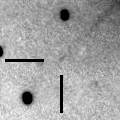
|
Now it is 17.5 mag (Nov. 14, K. Hills). It keeps 17-18 mag until early 2013. It keeps observable in good condition until early 2012 in the Southern Hemisphere, although it locates low in the Northern Hemisphere. In the Northern Hemisphere, it will be observable in good condition from 2012 autumn to early 2013.
Date(TT) R.A. (2000) Decl. Delta r Elong. m1 Best Time(A, h)
Nov. 26 0 25.16 -40 2.1 2.842 3.175 100 17.3 20:05 ( 0, 15)
Dec. 3 0 25.76 -38 18.6 2.892 3.154 96 17.3 19:38 ( 0, 17)
|
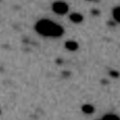
|
Now it is 17.8 mag (Oct. 22, C. Bell). It keeps observable at 18 mag for a long time until 2013.
Date(TT) R.A. (2000) Decl. Delta r Elong. m1 Best Time(A, h)
Nov. 26 5 34.31 26 16.0 2.988 3.924 158 17.3 1:18 ( 0, 81)
Dec. 3 5 29.96 26 15.3 2.957 3.923 166 17.3 0:46 ( 0, 81)
|
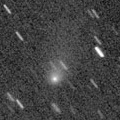
|
It was bright as 13.5 mag and visible visually still in 2011 summer. But it is fading now. It has already faded down to 16.4 mag (Nov. 2, L. Elenin). It will be fainter than 18 mag in December.
Date(TT) R.A. (2000) Decl. Delta r Elong. m1 Best Time(A, h)
Nov. 26 21 53.89 -34 41.7 4.108 3.990 76 17.4 18:18 ( 10, 20)
Dec. 3 21 55.93 -34 51.2 4.271 4.041 69 17.6 18:18 ( 15, 18)
|
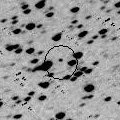
|
Peculiar asteroid moving along a cometary orbit. Now it is 18.4 mag (Oct. 26, Hidetaka Sato). It keeps observable at 18 mag for a long time from 2008 to 2014.
Date(TT) R.A. (2000) Decl. Delta r Elong. m1 Best Time(A, h)
Nov. 26 8 10.01 8 53.1 6.051 6.598 119 17.5 3:53 ( 0, 64)
Dec. 3 8 7.04 9 23.3 5.956 6.604 127 17.5 3:22 ( 0, 64)
|
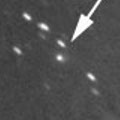
|
Now it is 17.2 mag (Nov. 14, V. Gerke, A. Novichonok, S. Plaksa). It will be observable in good condition for a while. But it will be fainter than 18 mag in December.
Date(TT) R.A. (2000) Decl. Delta r Elong. m1 Best Time(A, h)
Nov. 26 23 35.61 -8 20.9 1.508 2.040 107 17.5 19:16 ( 0, 47)
Dec. 3 23 43.45 -7 27.2 1.580 2.041 102 17.6 18:57 ( 0, 48)
|

|
It brightened up to 14.0 mag and became visible visually in August (Aug. 1, Juan Jose Gonzalez). Now it is fading. It has already faded down to 16.6 mag (Oct. 31, Yasukazu Ikari).
Date(TT) R.A. (2000) Decl. Delta r Elong. m1 Best Time(A, h)
Nov. 26 23 16.12 -14 8.1 1.990 2.385 101 17.6 18:57 ( 0, 41)
Dec. 3 23 23.00 -12 58.0 2.096 2.408 96 17.8 18:36 ( 0, 42)
|

|
Now it is 17.8 mag (Oct. 21, C. Bell). It will be observable in good condition at 18 mag from autumn to winter.
Date(TT) R.A. (2000) Decl. Delta r Elong. m1 Best Time(A, h)
Nov. 26 3 6.50 -14 48.3 3.202 4.023 141 17.6 22:46 ( 0, 40)
Dec. 3 3 3.22 -15 4.3 3.244 4.019 136 17.6 22:15 ( 0, 40)
|
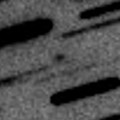
|
The currently reported brightness shows large variation, 16.9 mag on Oct. 22 (Artyom Novichonok), 20.7 mag on Oct. 30 (Hidetaka Sato), 18.2 mag on Nov. 4 (Artyom Novichonok). It may be variable in a short time. This comet was re-discovered in major outburst in 1991.
Date(TT) R.A. (2000) Decl. Delta r Elong. m1 Best Time(A, h)
Nov. 26 5 58.09 -2 27.0 1.828 2.689 143 17.7 1:41 ( 0, 53)
Dec. 3 5 54.43 -3 3.2 1.813 2.702 148 17.7 1:10 ( 0, 52)
|

|
It is expected to keep 13 mag and observable in good condition in the Northern Hemisphere for a long time from 2013 to 2014. Now it is 18.3 mag (Nov. 7, Hidetaka Sato). It keeps observable at 17-18 mag in good condition until 2012 June.
Date(TT) R.A. (2000) Decl. Delta r Elong. m1 Best Time(A, h)
Nov. 26 11 33.32 -3 57.8 7.594 7.280 67 18.0 5:15 (318, 42)
Dec. 3 11 34.17 -3 51.4 7.430 7.234 74 17.9 5:21 (327, 46)
|
|
![]()
 78P/Gehrels 2
78P/Gehrels 2 C/2011 Q2 ( McNaught )
C/2011 Q2 ( McNaught ) 21P/Giacobini-Zinner
21P/Giacobini-Zinner 73P/Schwassmann-Wachmann 3
73P/Schwassmann-Wachmann 3 P/2006 T1 ( Levy )
P/2006 T1 ( Levy ) 49P/Arend-Rigaux
49P/Arend-Rigaux 71P/Clark
71P/Clark C/2009 F4 ( McNaught )
C/2009 F4 ( McNaught ) C/2011 A3 ( Gibbs )
C/2011 A3 ( Gibbs ) 29P/Schwassmann-Wachmann 1
29P/Schwassmann-Wachmann 1 (596) Scheila
(596) Scheila 45P/Honda-Mrkos-Pajdusakova
45P/Honda-Mrkos-Pajdusakova C/2006 S3 ( LONEOS )
C/2006 S3 ( LONEOS ) C/2011 Q4 ( SWAN )
C/2011 Q4 ( SWAN ) C/2010 M1 ( Gibbs )
C/2010 M1 ( Gibbs ) C/2010 S1 ( LINEAR )
C/2010 S1 ( LINEAR ) 37P/Forbes
37P/Forbes C/2010 X1 ( Elenin )
C/2010 X1 ( Elenin ) C/2011 F1 ( LINEAR )
C/2011 F1 ( LINEAR ) C/2011 R1 ( McNaught )
C/2011 R1 ( McNaught ) 213P/2009 B3 ( Van Ness )
213P/2009 B3 ( Van Ness ) P/2010 JC81 ( WISE )
P/2010 JC81 ( WISE ) 27P/Crommelin
27P/Crommelin 48P/Johnson
48P/Johnson C/2011 S2 ( Kowalski )
C/2011 S2 ( Kowalski ) 65P/Gunn
65P/Gunn C/2011 M1 ( LINEAR )
C/2011 M1 ( LINEAR ) C/2008 FK75 ( Lemmon-Siding Spring )
C/2008 FK75 ( Lemmon-Siding Spring ) C/2011 L2 ( McNaught )
C/2011 L2 ( McNaught ) C/2010 B1 ( Cardinal )
C/2010 B1 ( Cardinal ) C/2010 FB87 ( WISE-Garradd )
C/2010 FB87 ( WISE-Garradd ) 164P/Christensen
164P/Christensen (3200) Phaethon
(3200) Phaethon C/2008 S3 ( Boattini )
C/2008 S3 ( Boattini ) C/2005 L3 ( McNaught )
C/2005 L3 ( McNaught ) C/2011 G1 ( McNaught )
C/2011 G1 ( McNaught ) P/2011 N1 ( ASH )
P/2011 N1 ( ASH ) 244P/2010 Q1 ( Scotti )
244P/2010 Q1 ( Scotti ) C/2009 Y1 ( Catalina )
C/2009 Y1 ( Catalina ) 2008 YB3
2008 YB3 253P/2011 R2 ( PanSTARRS )
253P/2011 R2 ( PanSTARRS ) 130P/McNaught-Hughes
130P/McNaught-Hughes 242P/2010 P3 ( Spahr )
242P/2010 P3 ( Spahr ) 97P/Metcalf-Brewington
97P/Metcalf-Brewington C/2011 J2 ( LINEAR )
C/2011 J2 ( LINEAR )![]()












































